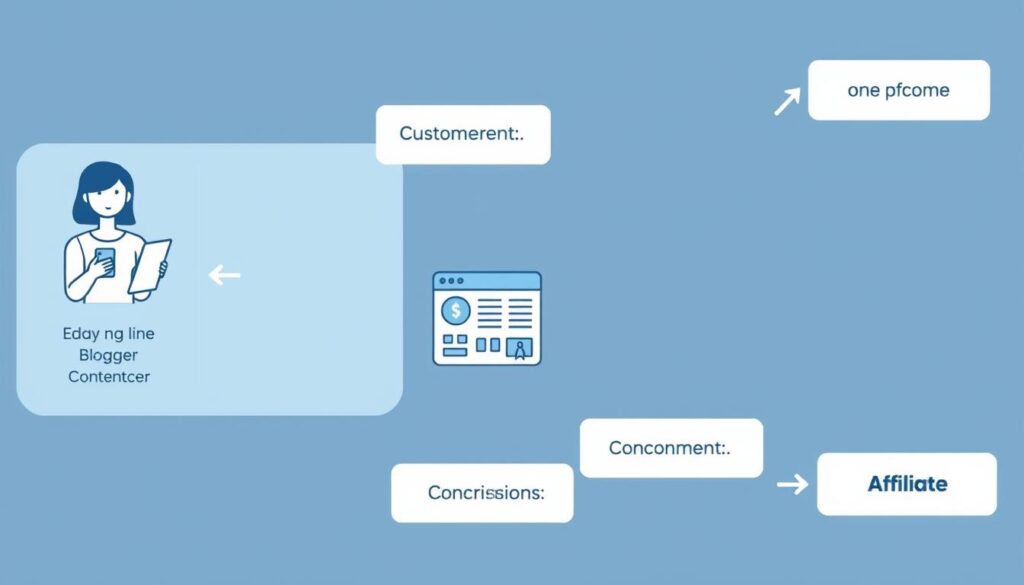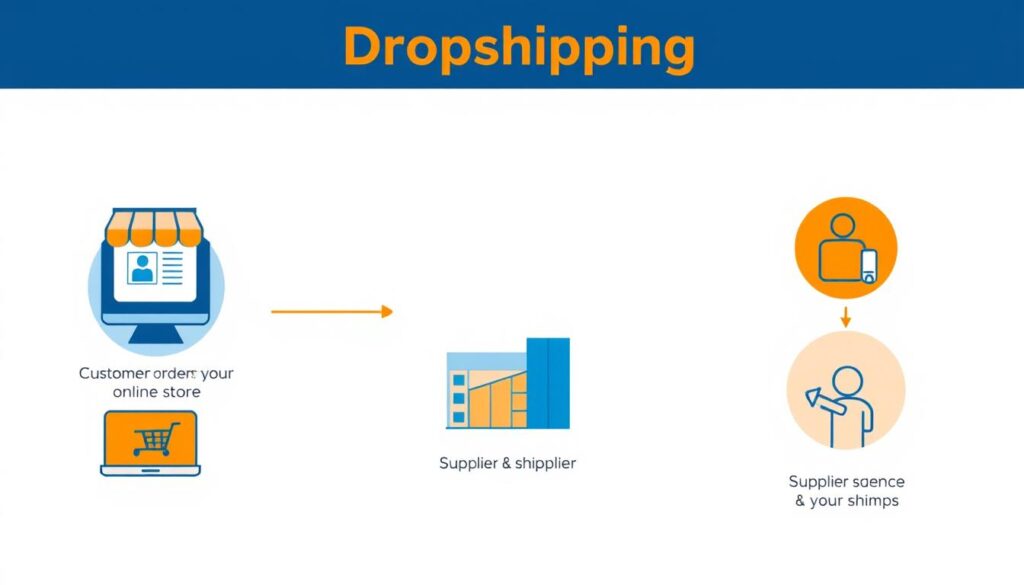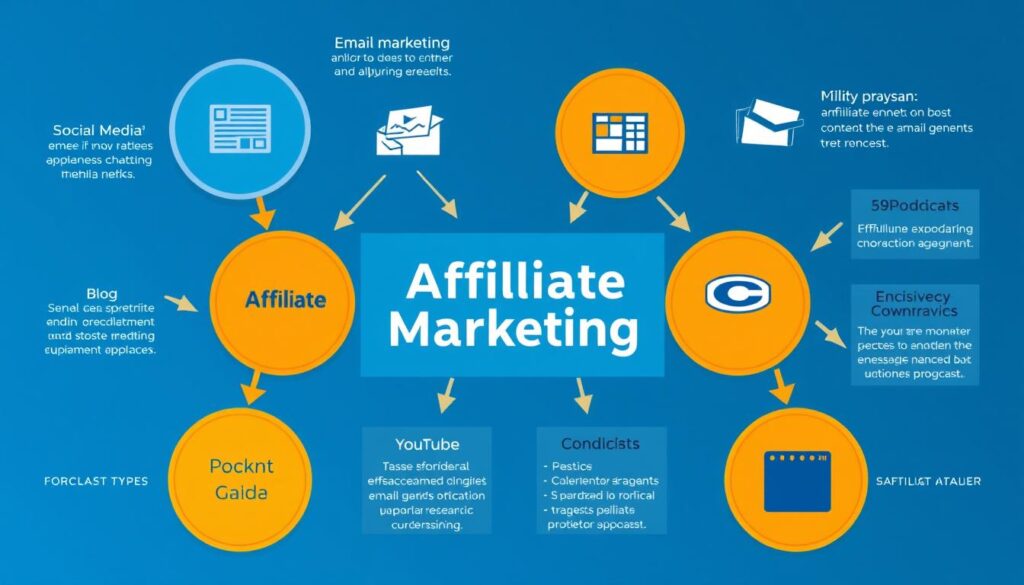The digital landscape continues to evolve in 2025, offering entrepreneurs multiple pathways to online success. Among the most popular options, affiliate marketing vs dropshipping stand out as low-entry business models that allow anyone to start earning without massive investments. But which one delivers better results with less hassle in today’s market?
Both models eliminate the need to create products or handle inventory directly, but they differ significantly in execution, profit potential, and day-to-day operations. This comprehensive comparison will help you decide which path aligns better with your goals and resources in 2025.
What Is Affiliate Marketing?
Affiliate marketing is a business model where you earn commissions by promoting other companies’ products or services. When someone purchases through your unique affiliate link, you receive a percentage of the sale without handling any product fulfillment or customer service.
This performance-based marketing approach has evolved significantly in 2025, with more companies offering generous commission structures and sophisticated tracking systems. The affiliate marketing industry continues to grow, now valued at over $17 billion globally.

How Affiliate Marketing Works
The process follows a simple framework:
- You join affiliate programs relevant to your niche or audience
- You receive unique tracking links for products or services
- You create content that incorporates these affiliate links
- When your audience clicks these links and makes purchases, you earn commissions
- The merchant handles all product delivery, customer service, and returns
Popular platforms for affiliate marketing include blogs, YouTube channels, social media accounts, email newsletters, and niche websites. Commission rates typically range from 5% to 50%, with digital products often offering the highest rates.
What Is Dropshipping?
Dropshipping is an ecommerce business model where you sell products through your online store without stocking inventory. When a customer places an order, you purchase the item from a supplier who ships it directly to the customer under your brand name.
The dropshipping market continues to expand, with projections reaching $1670 billion by 2031. This growth is fueled by improved supplier networks, better integration tools, and increasing consumer comfort with online shopping.

How Dropshipping Works
The dropshipping process follows these steps:
- You set up an online store (typically using Shopify or WooCommerce)
- You add products from suppliers to your store at marked-up prices
- Customers visit your store and place orders
- You forward these orders to your supplier and pay the wholesale price
- The supplier ships products directly to your customers
- You keep the difference between your selling price and the wholesale cost
Profit margins in dropshipping typically range from 15% to 45%, depending on your niche, competition, and marketing costs. The model allows you to test multiple products without upfront inventory investments.
Pros and Cons of Affiliate Marketing
Advantages of Affiliate Marketing
- Zero Product Handling – You never touch inventory or deal with shipping logistics
- No Customer Support – The merchant handles all customer inquiries and complaints
- Passive Income Potential – Content you create can generate commissions for months or years
- Low Startup Costs – Begin with just a social media account or basic website
- High-Ticket Options – Promote products with commissions ranging from $100 to $1000+ per sale
- Multiple Niches – Freedom to promote products across various industries
- Location Independence – Work from anywhere with internet access
Disadvantages of Affiliate Marketing
- Commission Limitations – Rates are set by merchants and cannot be negotiated
- Dependency on Programs – Companies can change terms or terminate programs
- Attribution Issues – Customers may remove affiliate links before purchasing
- Payment Delays – Many programs pay monthly or have minimum thresholds
- No Customer Data – Limited access to valuable customer information
- Content Creation Demands – Requires consistent production of quality content
- Competition – Popular niches often have many established affiliates

Pros and Cons of Dropshipping
Advantages of Dropshipping
- Brand Control – Build your own ecommerce brand and identity
- Pricing Freedom – Set your own prices and profit margins
- Product Selection – Choose from millions of potential products
- Low Initial Investment – No inventory purchases required upfront
- Scalability – Add new products without additional infrastructure
- Customer Relationships – Build direct relationships with buyers
- Immediate Payment – Receive customer payments before paying suppliers
Disadvantages of Dropshipping
- Customer Service Burden – You handle all customer inquiries and complaints
- Shipping Complications – Limited control over delivery times and quality
- Lower Profit Margins – Competition often drives prices down
- Product Quality Issues – Difficult to verify quality without seeing products
- Returns Management – Complex process involving you and suppliers
- Inventory Fluctuations – Suppliers may run out of stock without notice
- Higher Marketing Costs – Need to drive traffic to your store consistently

Key Differences Between Affiliate Marketing vs Dropshipping 2025
Understanding the fundamental differences between these business models helps identify which aligns better with your goals and resources. Here’s a side-by-side comparison of the most important factors:
| Criteria | Affiliate Marketing | Dropshipping |
| Startup Cost | $0-$500 (website, content creation) | $200-$1,000 (store setup, apps, marketing) |
| Time to First Sale | 1-3 months (content needs to gain traction) | 1-4 weeks (with active marketing) |
| Customer Responsibility | None (handled by merchant) | Full responsibility for support and satisfaction |
| Profit Margins | 5-50% commission on sales | 15-45% margin on products |
| Scalability | Create more content or expand to new platforms | Add more products or enter new niches |

Beyond these core differences, your personal preferences and strengths play a crucial role in determining which model suits you better. Content creators and communicators often excel at affiliate marketing, while those with strong operational and customer service skills may prefer dropshipping.
Which Model Is Better for Beginners in 2025?
For most beginners entering the online business space in 2025, affiliate marketing offers significant advantages over dropshipping. Here’s why:
Lower Risk and Simpler Operations
Affiliate marketing presents fewer operational complexities and financial risks for newcomers. You can start with minimal investment and gradually scale as you learn what works. There’s no inventory risk, no customer service headaches, and no need to manage suppliers or shipping logistics.

Advanced Automation Tools
The affiliate marketing landscape in 2025 benefits from sophisticated automation tools that weren’t available in previous years. AI content assistants help create engaging promotional material, while advanced analytics platforms provide deeper insights into audience behavior and conversion patterns.
High-Ticket Affiliate Programs
The proliferation of high-ticket affiliate programs means beginners can earn substantial commissions even with modest traffic. Programs offering $500-$1,000+ per sale allow new affiliates to generate meaningful income with fewer conversions, making the path to profitability more accessible.
Zero Inventory and Refund Risks
Unlike dropshipping, affiliate marketing eliminates concerns about product quality, shipping delays, or customer returns. These operational challenges can quickly overwhelm beginners in dropshipping, whereas affiliate marketers can focus entirely on content creation and promotion.

Why I Recommend Affiliate Marketing in 2025
The affiliate marketing landscape has evolved significantly, making it more accessible and profitable than ever before. Here are the key developments that make affiliate marketing particularly attractive in 2025:
Evolution of Affiliate Programs
Today’s affiliate programs offer more than just basic commission structures. Many now provide:
- Done-For-You Funnels – Pre-built marketing systems that convert visitors
- Extended Cookie Durations – Some programs now offer 90-day or lifetime cookies
- Two-Tier Commissions – Earn from affiliates you refer to programs
- Recurring Commission Models – Ongoing payments for subscription products

New Platform Opportunities
While blogs and websites remain effective, new platforms have emerged as powerful affiliate marketing channels:
- YouTube Shorts – Short-form video content with affiliate links in descriptions
- Pinterest – Visual discovery platform with strong commercial intent
- Podcasts – Audio content with special tracking links and promo codes
- Newsletter Platforms – Subscription-based email content with integrated affiliate offers
AI-Powered Content Creation
Artificial intelligence tools have revolutionized content production, allowing affiliates to:
- Generate product comparisons and reviews faster
- Create personalized content for different audience segments
- Optimize content for search engines more effectively
- Scale content production without sacrificing quality
These advancements make affiliate marketing more accessible to beginners while offering experienced marketers new ways to scale their operations and increase profits in 2025.
Final Verdict: Choose What Fits Your Goals
When deciding between affiliate marketing vs dropshipping in 2025, consider your personal strengths, resources, and business objectives:
Choose Affiliate Marketing If You:
- Enjoy creating content and building audiences
- Prefer minimal operational complexity
- Want to avoid customer service responsibilities
- Have limited startup capital
- Value location and time freedom
Choose Dropshipping If You:
- Want to build your own brand and ecommerce presence
- Prefer controlling product pricing and margins
- Don’t mind handling customer service
- Enjoy product selection and market research
- Want to own customer data and relationships

Both models offer viable paths to online income in 2025, but for most beginners, affiliate marketing provides a gentler learning curve with fewer operational headaches. The ability to start with minimal investment and scale gradually makes it particularly suitable for those new to online business.
Remember that success in either model requires consistent effort, strategic thinking, and adaptation to changing market conditions. The most important factor is choosing the approach that aligns with your personal strengths and business goals.
Ready to Start Your Affiliate Marketing Journey?
Discover how complete beginners are earning $1,000+ commissions with proven affiliate marketing strategies that work in 2025. No technical skills required.
Frequently Asked Questions
Is affiliate marketing easier than dropshipping?
Yes, affiliate marketing is generally easier than dropshipping for beginners. It requires less operational management, eliminates customer service responsibilities, and can be started with minimal investment. Affiliate marketing focuses primarily on content creation and promotion, while dropshipping involves managing suppliers, handling customer inquiries, and dealing with shipping logistics.
Can I do both affiliate marketing and dropshipping?
Absolutely! Many successful online entrepreneurs combine both models. You might start with affiliate marketing to build an audience and develop marketing skills, then expand into dropshipping for specific products where you see opportunity. Alternatively, you could add affiliate offers to your dropshipping store to diversify your income streams. The skills developed in one model often transfer well to the other.
How much money do I need to start affiliate marketing in 2025?
You can start affiliate marketing with as little as
Frequently Asked Questions
Is affiliate marketing easier than dropshipping?
Yes, affiliate marketing is generally easier than dropshipping for beginners. It requires less operational management, eliminates customer service responsibilities, and can be started with minimal investment. Affiliate marketing focuses primarily on content creation and promotion, while dropshipping involves managing suppliers, handling customer inquiries, and dealing with shipping logistics.
Can I do both affiliate marketing and dropshipping?
Absolutely! Many successful online entrepreneurs combine both models. You might start with affiliate marketing to build an audience and develop marketing skills, then expand into dropshipping for specific products where you see opportunity. Alternatively, you could add affiliate offers to your dropshipping store to diversify your income streams. The skills developed in one model often transfer well to the other.
How much money do I need to start affiliate marketing in 2025?
You can start affiliate marketing with as little as $0-$500 in 2025. The minimal approach requires just a social media account or free blogging platform. For better results, a small investment in a domain name ($10-15/year), hosting ($5-20/month), and potentially some basic tools for content creation and keyword research ($50-200) can accelerate your progress. This is significantly less than most traditional businesses require for startup.
Is affiliate marketing still profitable in 2025?
Yes, affiliate marketing remains highly profitable in 2025, with the global industry exceeding $17 billion. While competition has increased in some niches, new opportunities continue to emerge through evolving platforms, improved commission structures, and advanced marketing tools. High-ticket affiliate programs offering $500-$1,000+ per sale make it possible to generate substantial income even with modest traffic volumes.

-0 in 2025. The minimal approach requires just a social media account or free blogging platform. For better results, a small investment in a domain name (-15/year), hosting (-20/month), and potentially some basic tools for content creation and keyword research (-200) can accelerate your progress. This is significantly less than most traditional businesses require for startup.
Is affiliate marketing still profitable in 2025?
Yes, affiliate marketing remains highly profitable in 2025, with the global industry exceeding billion. While competition has increased in some niches, new opportunities continue to emerge through evolving platforms, improved commission structures, and advanced marketing tools. High-ticket affiliate programs offering 0-
Frequently Asked Questions
Is affiliate marketing easier than dropshipping?
Yes, affiliate marketing is generally easier than dropshipping for beginners. It requires less operational management, eliminates customer service responsibilities, and can be started with minimal investment. Affiliate marketing focuses primarily on content creation and promotion, while dropshipping involves managing suppliers, handling customer inquiries, and dealing with shipping logistics.
Can I do both affiliate marketing and dropshipping?
Absolutely! Many successful online entrepreneurs combine both models. You might start with affiliate marketing to build an audience and develop marketing skills, then expand into dropshipping for specific products where you see opportunity. Alternatively, you could add affiliate offers to your dropshipping store to diversify your income streams. The skills developed in one model often transfer well to the other.
How much money do I need to start affiliate marketing in 2025?
You can start affiliate marketing with as little as $0-$500 in 2025. The minimal approach requires just a social media account or free blogging platform. For better results, a small investment in a domain name ($10-15/year), hosting ($5-20/month), and potentially some basic tools for content creation and keyword research ($50-200) can accelerate your progress. This is significantly less than most traditional businesses require for startup.
Is affiliate marketing still profitable in 2025?
Yes, affiliate marketing remains highly profitable in 2025, with the global industry exceeding $17 billion. While competition has increased in some niches, new opportunities continue to emerge through evolving platforms, improved commission structures, and advanced marketing tools. High-ticket affiliate programs offering $500-$1,000+ per sale make it possible to generate substantial income even with modest traffic volumes.

,000+ per sale make it possible to generate substantial income even with modest traffic volumes.






